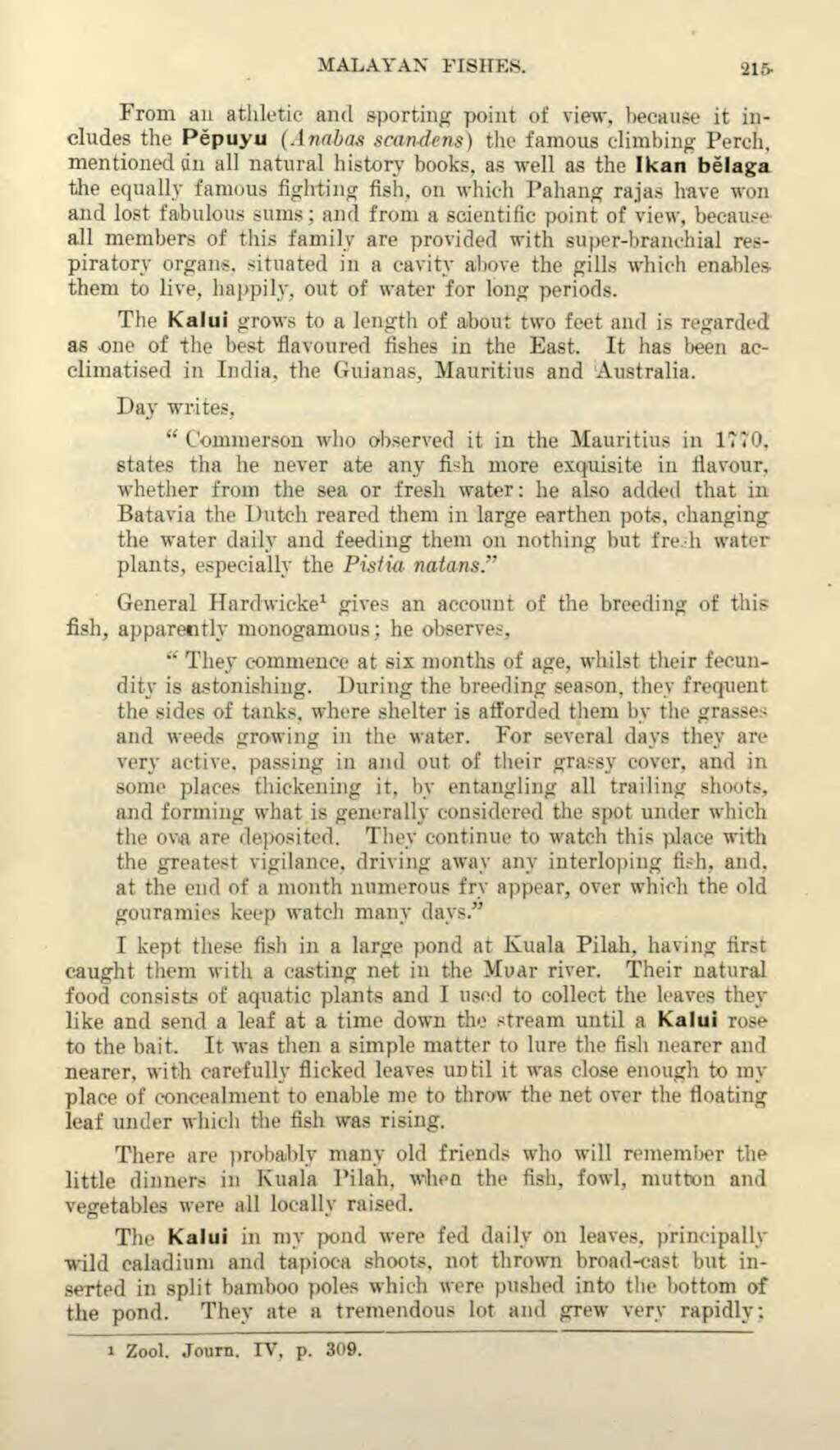From an athletic and sporting point of view, because it includes the Pěpuyu (Anabas scandens) the famous climbing Perch, mentioned in all natural history books, as well as the Ikan bělaga the equally famous fighting fish, on which Pahang rajas have won and lost fabulous sums; and from a scientific point of view, because all members of this family are provided with super-branchial respiratory organs, situated in a cavity above the gills which enables them to live, happily, out of water for long periods.
The Kalui grows to a length of about two feet and is regarded as one of the best flavoured fishes in the East. It has been acclimatised in India, the Guianas, Mauritius and Australia.
Day writes,
"Commerson who observed it in the Mauritius in 1770, states tha he never ate any fish more exquisite in flavour, whether from the sea or fresh water: he also added that in Batavia the Dutch reared them in large earthen pots, changing the water daily and feeding them on nothing but fresh water plants, especially the Pistia natans."
General Hardwicke[1] gives an account of the breeding of this fish, apparently monogamous; he observes,
"They commence at six months of age, whilst their fecundity is astonishing. During the breeding season, they frequent the sides of tanks, where shelter is afforded them by the grasses and weeds growing in the water. For several days they are very active, passing in and out of their grassy cover, and in some places thickening it, by entangling all trailing shoots, and forming what is generally considered the spot under which the ova are deposited. They continue to watch this place with the greatest vigilance, driving away any interloping fish, and, at the end of a month numerous fry appear, over which the old gouramies keep watch many days."
I kept these fish in a large pond at Kuala Pilah, having first caught them with a casting net in the Muar river. Their natural food consists of aquatic plants and I used to collect the leaves they like and send a leaf at a time down the stream until a Kalui rose to the bait. It was then a simple matter to lure the fish nearer and nearer, with carefully flicked leaves until it was close enough to my place of concealment to enable me to throw the net over the floating leaf under which the fish was rising.
There are probably many old friends who will remember the little dinners in Kuala Pilah, when the fish, fowl, mutton and vegetables were all locally raised.
The Kalui in my pond were fed daily on leaves, principally wild caladium and tapioca shoots, not thrown broad-cast but inserted in split bamboo poles which were pushed into the bottom of the pond. They ate a tremendous lot and grew very rapidly;
- ↑ Zool. Journ. IV, p. 309.
